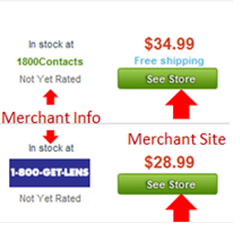CSE or Marketplace?

Marketplaces and Comparison Shopping Engines (CSEs) appear to be very similar in both functionality and landing pages, which aggretate produts using a search tool, and advertisements.
Comparison Shopping Engines group products based on keyword searches, listing products with the same SKU on comparison pages.
For customers, this means a fluid shopping experience, and the ability to compare merchant variables based on product price.
For merchants, CSEs provide exposure for products, and a centralized, reliable merchant location.
Customers click links to specific merchant webpages through the CSE having browsed aggregated products.
In exchange, merchants pay for each click thru to their website (or CPC/PPC). Merchants can also optimize ROI and COS through changing bids and removing or down-bidding products and categories.
 Like Comparison Shopping Engines,
Like Comparison Shopping Engines,
marketplaces provide a single location for shoppers to browse multiple products, and shop based on desired variables, such as price or shipping cost.
The differentiation between the two types of sites is nearly indistinguishable for customers.
However, the distinction between Comparison Shopping Engines and Marketplaces is pivotal.
Rather than a CPC program, Marketplaces charge merchants a percent of each sale, which varies dependent on the merchant site. This drastically shifts merchant strategy.
An important distinction between CSEs and Marketplaces is where transactions take place. On CSEs, a customer is linked through to a merchant page to make a purchase, where they have the option to browse other products, and become familiarized with the brand.
Additionally, merchants then have the opportunity to capture that customer information and use it to potentially create future sales.
Contrastingly, markeplaces handle the entirety of a sale on their site. Shoppers can purchase items form different merchants, but that product is sold through the marketplace, which the shopper never leaves.
Customers can view information about the merchant, but there is no interaction there. The only exception to this being Amazon Product Ads, which links customers to the merchant site.
A major element of marketplaces is their customer trust. Markeplaces, like Amazon mandate any error is the fault of the merchant, and not the shopper.
While this is great for customers, and generates a large customer base, it is a burden for merchants, who need to stay on top of their listings, monitoring information to make sure its correct.
Amazon specifically also relies heavily on customer surveys. So much so that if a merchant scores too low on customer surveys consistently, they can be kicked off the site.
